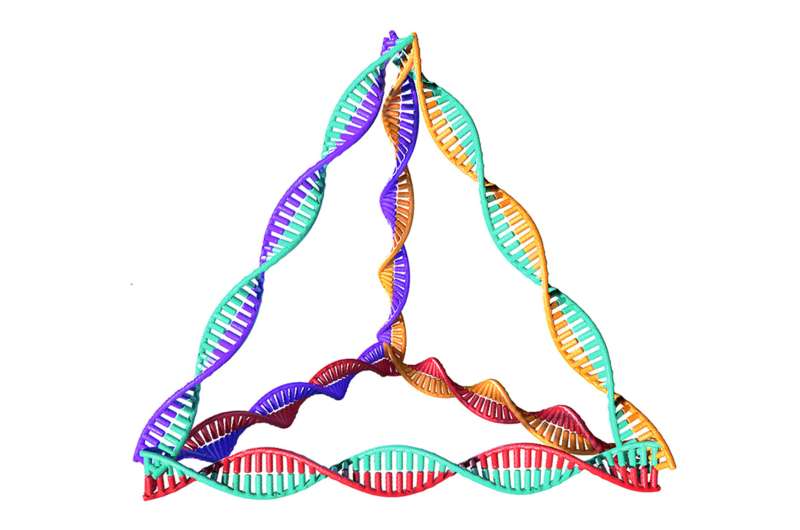Reversing new-onset type 1 diabetes with pyramid-like DNA

Usually diagnosed in children, teens and young adults, type 1 diabetes is an autoimmune disease in which the immune system attacks and destroys insulin-secreting β-cells in the pancreas. As a result, people with type 1 diabetes can't regulate their blood sugar levels and require insulin treatment for survival. Now, researchers reporting in ACS Applied Materials & Interfaces have reversed new-onset type 1 diabetes in mice with pyramid-like DNA molecules called tetrahedral framework nucleic acids (tFNAs).
About 64,000 people in the U.S. are diagnosed with type 1 diabetes each year, according to the Juvenile Diabetes Research Foundation. There is no cure for the disease, and to manage symptoms, people must measure their blood sugar levels throughout the day and administer insulin through an injection or pump. Although scientists still don't know exactly what causes the body to turn against itself and attack insulin-secreting cells, people with type 1 diabetes have fewer regulatory T cells (Tregs)—immune cells that suppress the differentiation and activation of other, self-attacking T cells. In a recent study published in ACS' Nano Letters, Yunfeng Lin and colleagues showed that treating mice with tFNAs could prevent type 1 diabetes, in part by increasing Treg numbers. Originally designed to carry other therapeutic molecules into cells, tFNAs have recently been shown to modulate the immune system on their own. Now, the researchers wanted to find out if these molecules could reverse new-onset type 1 diabetes, before pancreatic β-cells were completely destroyed.
The researchers made tFNAs from four single-stranded DNA segments that self-assembled into pyramid-like shapes, called tetrahedrons. But whereas a pyramid is square at its base, tetrahedrons are triangular. Then, every other day for 4 weeks, they injected the tFNAs into 10 mice with new-onset type 1 diabetes, while 10 other diabetic mice were injected with saline. In the control mice, blood glucose levels continued to rise, and 60% of the mice died during the 12-week follow-up period. In contrast, blood glucose levels in mice treated with tFNAs went down to normal levels, and none of the rodents died. In a further analysis of the tFNA-treated mice, the team found that pancreatic β-cells were protected, and Tregs were restored to normal levels, while auto-reactive T cells decreased in the pancreas. Although the findings still need to be verified in people, tFNAs are one of the most promising candidates for type 1 diabetes immunotherapy, the researchers say.
More information: Shaojingya Gao et al, Tetrahedral Framework Nucleic Acids Reverse New-Onset Type 1 Diabetes, ACS Applied Materials & Interfaces (2021). DOI: 10.1021/acsami.1c16151





















